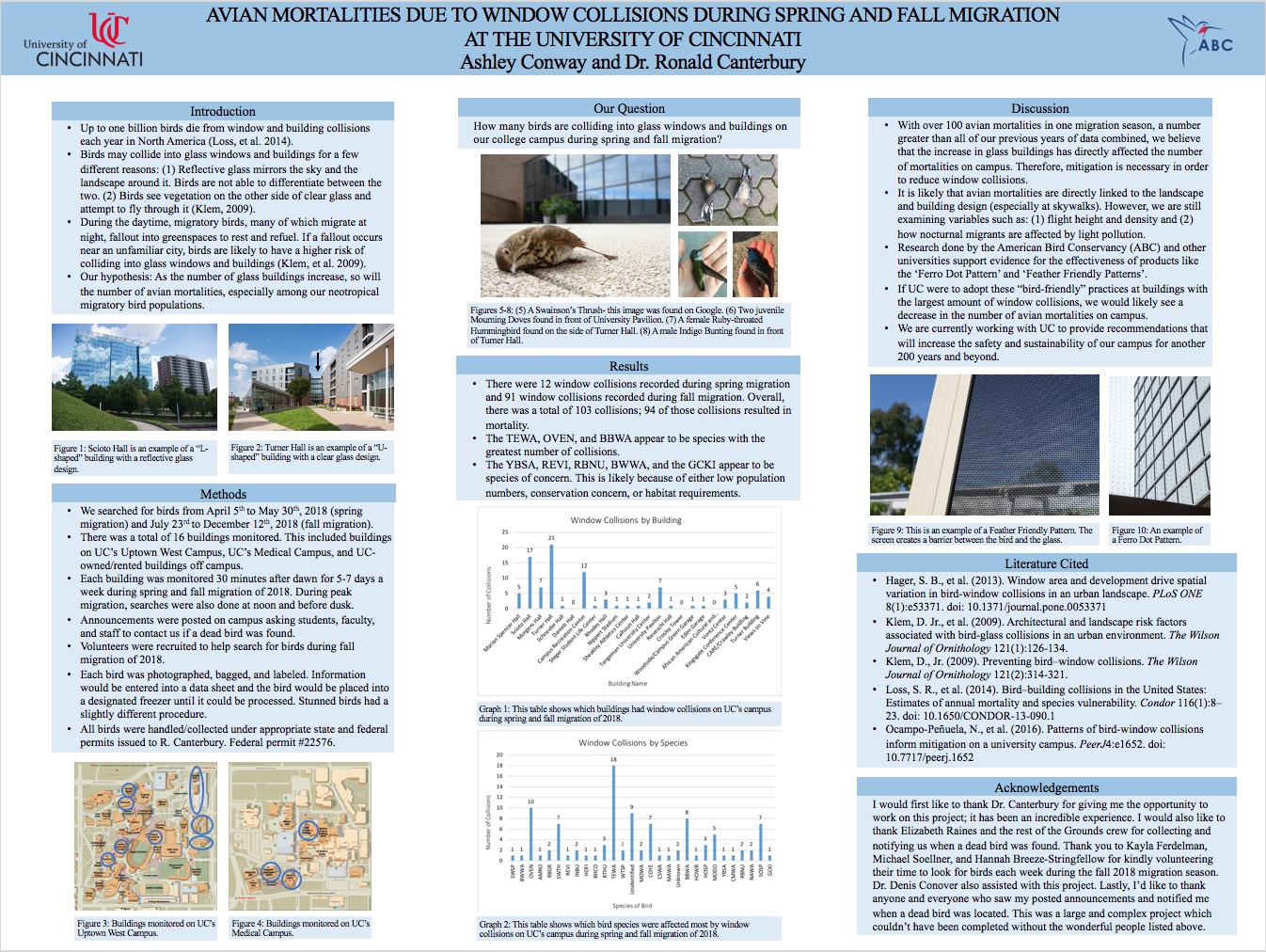Avian mortalities due to window collisions during spring and fall migration at the University of Cincinnati
Main Article Content
Abstract
By Ashley Conway, Environmental Studies
Advisor: Ronald Canterbury
Presentation ID: PM_ATRIUM22
Abstract: It is estimated that up to one billion birds die from building and window collisions each year in North America. As the number of glass buildings increase globally, we may see a more drastic decline in many avian populations, especially in Neotropical migrant species. During migration, birds must stop to rest and refuel and will fall out into not only critically important, high-quality stopover habitats, but also in greenspace and urban areas where a higher likelihood of colliding into glass buildings exist. The UC campus is no exception to this. Data over the past 10-15 years lead us to predict no significant relationship among the number of avian collision mortalities and building architectural design and environmental factors, such as invasive plant species and weather. However, recently, we found the number of collisions to be quite large, with over 100 collisions from April 5th to December 12th, 2018. Nocturnal artificial lights and building designs, especially those with glass connectors on campus, may contribute to higher than expected window collisions leading to "super collider" avian species in this urban landscape. These include the most common species found, specifically the Ovenbird (Seiurus aurocapilla), Tennessee Warbler (Leiothlypis peregrina), and Common Yellowthroat (Geothlypis trichas) as well as other migratory songbird species. We are working to identify potential risks that migratory birds currently face in our city and to mitigate for another 200 years and beyond at UC.
